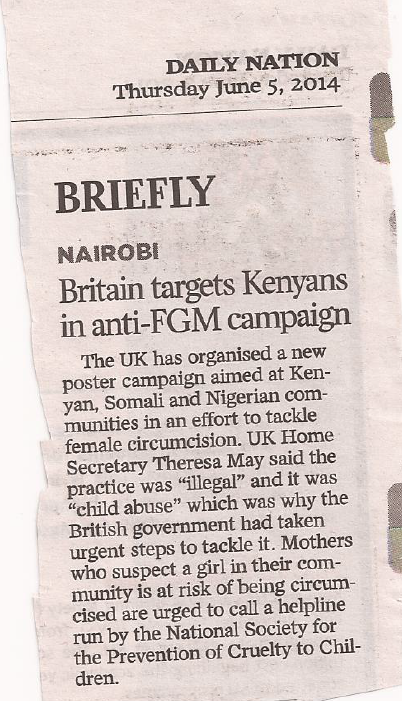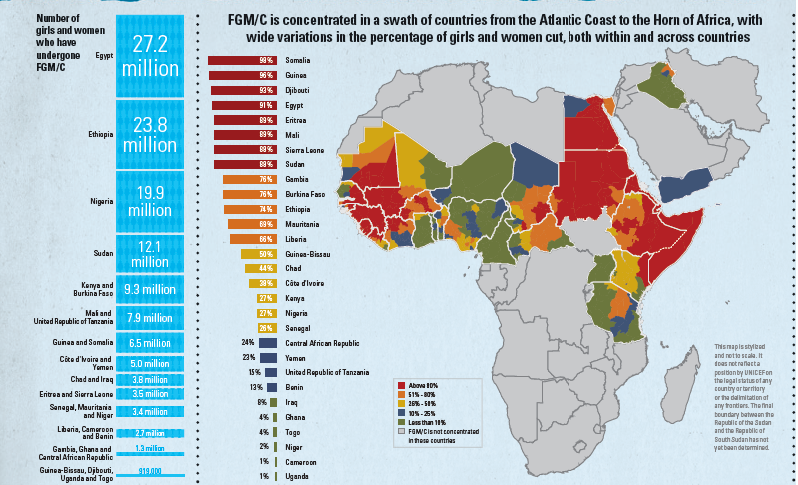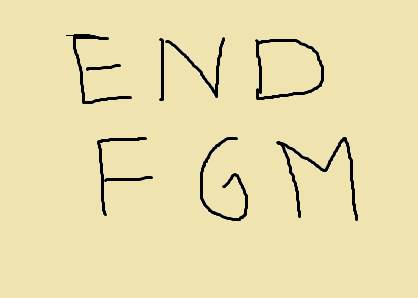Fighting FGM – part 1
I was caught – as I always am – by the small little articles that are squashed into the briefs in ‘The Daily Nation’. I saw this little one about a campaign aimed at tackling female circumcision in Kenya, Somali and Nigeria.
I thought to myself – there must be some mistake, ‘Kenya can’t be doing this badly, to need aid alongside Somalia to fight FGM’. So, like the good scientist that I am ………I decided to look for evidence to prove to myself that really, the British should take all their money to fight FGM elsewhere, not Kenya.
However, according the KHDS of 2008-9, nearly every woman in North-eastern province (98%) is circumcised.
http://apps.who.int/medicinedocs/documents/s17116e/s17116e.pdf
For the rest of the country the proportion of women circumcised ranges from the lowest, 0.8% in Western Province to a maximum of 35% in Eastern province. According to this survey, it appears that 1 out of every 3 women in Rift Valley, Nyanza, Eastern and Central Provinces were circumcised in the period when the survey was done (2008-9). Remember this study was conducted at a time when Kenya had 8 provinces not 47 counties. So if 5 out of 8 provinces have a major problem, this says that more than half of the country is doing badly.
But it gets worse. Take a look at this UNICEF 2013 report
http://www.unicef.org/media/files/FGCM_Lo_res.pdf
If all the countries that practised FGM were lined up from the country that has the highest percentage of women that are circumcised to the lowest, Kenya is 17th globally. Ok, Somalia clearly tops the list and there are many countries between Somalia and Kenya BUT that does not negate the fact that we do have a serious problem.
When you think that this is a practise that appears to have absolutely no benefits, then it should puzzle you- why is this thing not ending?
In my childhood, I read a lot all my mum’s VIVA magazines and thought that these anti-circumcision campaigns worked. But as I sit to write this article, and remove the rose-colored tinted glasses labelled ‘happy ever childhood’, I realise that things were pretty awful when it came to FGM.
My mother’s house is near a swamp that has a thicket of banana trees and I remember over the holidays, especially Christmas holidays, we would occasionally see girls ‘walking funny’ up the path from the swamp, to a house some few blocks away from ours.
I was later to learn that those girls ‘walking funny’, had just been circumcised under the thicket of the banana trees. The woman in that house was in the medical profession and apparently, her ‘cuts’ healed well. We saw those girls for a few years only. The lady a few blocks away stopped cutting – I imagine that it got too risky to go to the banana thicket since everyone knew about it. Maybe she was now going somewhere else, I never bothered to ask.
One of my friends in primary school spoke very highly about circumcision and I do remember asking me mother when I would get circumcised. My mother was just getting poised to give me a lecture, instead she took a deep breath – and calmly told me, ‘When we go to visit your grandmother over Christmas, you tell her. I don’t want anything to do with that. She can take you if you want.’ Christmas came, but by then I had learnt that the whole process was not that much fun. I never asked my grandmother and my mother never raised the issue until much later when we had a good laugh about it.
I look back to high school – which being a national school had a mix of girls from all over the country – and I remember a girl in my dormitory who talked very proudly about the fact that she was circumcised. Then I remember another girl who hailed from the North Rift Valley and her prayer request at bible study was that God would do something and come to her aid, because her parents were keen to have her circumcised and she did not want it. I remember one Christmas break she lived in dread off, it was an agony I could not appreciate then.
As these issues were going on in this very rosy childhood of mine – those messages were still there on TV and radio – circumcision is bad and it is illegal, it is unhealthy.
In 2011, Kenya passed the ‘Prohibition of Female Genital mutilation act’.
http://kenyalaw.org/kl/fileadmin/pdfdownloads/Acts/ProhibitionofFemaleGenitalMutilationAct_No32of2011.pdf
The message was loud and clear – the country was going to use the law and force this thing out.
Then we started hearing of stories about Kuria girls being ferried to Tanzania for circumcision and then you know something is not working.
Back to the newspapers again – in the same day that the daily reported that more money was coming our way to fight FGM, this was happening.
These women are tired of what they have grown up with as something beautiful being declared a ‘retrogressive cultural practise’. The British money is targeting these women, yet it comes with the message ‘child abuse’ and ‘illegal’
With British money, we shall criminalise FGM even further by using help lines to tell on our neighbours who circumcise….
In the UK, Somali girls visit relatives in Somalia and return home to the UK, circumcised.
Criminalising FGM will go some way in getting rid of it but beyond a certain point, more needs to be done. If it is clearly not working in some communities, there is no point to offer the same prescription and expect a different cure rate. Clearly, something in the way we are trying to end FGM is not working, I will write more next week.






